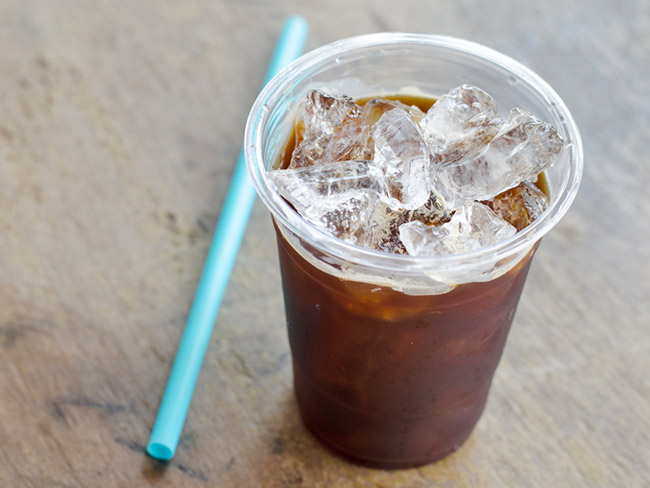Cold brew coffee: What's the buzz?
This coffeehouse staple is easy to make at home.
You may have noticed it popping up on menus at small cafes and large coffee chains and even appearing on grocery store shelves. Cold brew coffee is not a new idea; it dates all the way back to the 1600s in Japan, and it’s been rising in popularity in recent years.
Cold brew coffee is made by steeping coffee grounds for a long period of time — about 12 hours — in room temperature or cold water. Yes, it requires a little bit of planning ahead, but it’s worth it!
Brewing at a lower temperature results in lower acidity and a smooth coffee concentrate with virtually no bitterness. In fact, it’s so smooth that you can skip syrups, milk, or other artificial flavoring and save yourself the added sugar and fat.
Still prefer flavored coffee? Here are some options that are better for you than artificial flavors and sweeteners:
- Spices: Try cinnamon, apple pie spice, nutmeg, or cardamom for a simple, sugar-free way to add an extra kick to your “cup of Joe.”
- Extracts: Check your baking pantry. Vanilla, peppermint, coconut, and almond are a few options. Just a dash will do.
Servings: 2 glasses
Prep time: 1/2 hour
Total time: 12 1/2 hours, start to finish (includes 12 hours rest time)
Ingredients
- 1/3 cup ground coffee of your choice (medium-coarse grind)
- 1 1/2 cup cold water
Directions
- In a large jar or other container, gently stir together coffee and cold water.
- Cover and let rest at room temperature overnight or 12 hours.
- Strain twice through a coffee filter or a fine-mesh sieve.
The resulting coffee concentrate will keep up to 2 weeks in the refrigerator. Before serving, dilute the coffee concentrate with water using a 1-to-1 ratio. Enjoy over ice.
Tip: Use some of the cold brew to make coffee ice cubes. Coffee ice cubes are a great way to avoid diluting your coffee.
